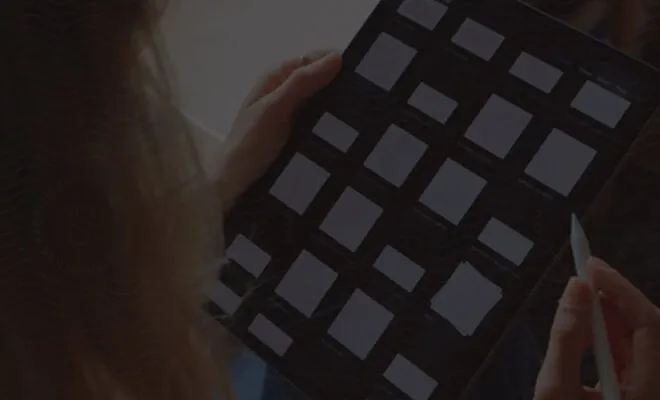Add PDF functionality with Next.js
Nutrient Web SDK is a JavaScript PDF library for viewing, annotating, and editing PDFs directly in the browser. Use it to add PDF capabilities to any web app.
This guide walks you through the steps to integrate Nutrient Web SDK into your project. By the end, you’ll be able to render a PDF document in the user interface (UI).
You can test the SDK capabilities in our playground.
Prefer to jump straight to code? View the example repo on GitHub.
Installation
You can load Nutrient Web SDK directly from Nutrient’s content delivery network (CDN). Nutrient maintains the CDN for customers, and it’s our recommended way to get started. For more control and flexibility, use the local installation option.
Add the following in your Next.js layout component (for example,
layout.tsx):layout.tsx import Script from "next/script";export default function RootLayout({children,}: Readonly<{children: React.ReactNode;}>) {return (<html lang="en"><body><Scriptsrc="https://cdn.cloud.pspdfkit.com/pspdfkit-web@1.8.0/nutrient-viewer.js"// Load before the page becomes interactive to reference `window.NutrientViewer` in the client.strategy="beforeInteractive"/>{children}</body></html>);}You’re now ready to use Nutrient Web SDK and reference
window.NutrientViewerin the client-side code.
Turbopack compatibility — If you’re using Turbopack (
next dev --turbo), you’ll need to remove the--turboflag from your dev script, as webpack configuration doesn’t work with Turbopack.
Add the Nutrient Web SDK (
@nutrient-sdk/viewer) dependency:Configure
next.config.tsso Nutrient Web SDK assets are made available to your app in thepublicdirectory:First, add the
copy-webpack-pluginto your project:Terminal window npm i copy-webpack-pluginTerminal window pnpm add copy-webpack-pluginTerminal window yarn add copy-webpack-pluginnext.config.ts const CopyPlugin = require("copy-webpack-plugin");const path = require("node:path");import type { NextConfig } from "next";// Exclude `@nutrient-sdk/viewer` from the client-side bundle to optimize performance// and avoid potential conflicts with the script loaded in `layout.js`.const nextConfig: NextConfig = {webpack: (config) => {config.plugins.push(new CopyPlugin({patterns: [{from: path.resolve(__dirname,"node_modules/@nutrient-sdk/viewer/dist",),to: path.resolve(__dirname, "public"),info: () => ({ minimized: true }),force: true,},],}),);return config;},};export default nextConfig;Make sure your public directory contains a
nutrient-viewerdirectory with the Nutrient library assets:Directorypublic
Directorynutrient-viewer
- ...
Directorysrc
- ...
- package.json
- ...
Set
srcfor the Nutrient Web SDK script in your layout component:layout.tsx export default function RootLayout({children,}: Readonly<{children: React.ReactNode;}>) {return (<html lang="en"><body><Scriptsrc="/nutrient-viewer/nutrient-viewer.js"strategy="beforeInteractive"/>{children}</body></html>);}Finally, update
next.config.tsto exclude bundling@nutrient-sdk/viewerin the client-side bundle:next.config.ts const CopyPlugin = require("copy-webpack-plugin");const path = require("node:path");import type { NextConfig } from "next";// Exclude `@nutrient-sdk/viewer` from the client-side bundle to optimize performance// and avoid potential conflicts with the script loaded in `layout.js`.const nextConfig: NextConfig = {webpack: (config, { isServer }) => {if (!isServer) {config.externals = config.externals || [];config.externals.push({"@nutrient-sdk/viewer": "@nutrient-sdk/viewer",});}config.plugins.push(new CopyPlugin({patterns: [{from: path.resolve(__dirname,"node_modules/@nutrient-sdk/viewer/dist",),to: path.resolve(__dirname, "public"),info: () => ({ minimized: true }),force: true,},],}),);return config;},};export default nextConfig;You’re now ready to use Nutrient Web SDK locally in your Next.js app.
Rendering a PDF
This guide covers integration using App Router(opens in a new tab) (Next.js 13+). You can use a similar approach for Pages Router(opens in a new tab) (Next.js 12 and earlier).
Load the PDF file into a component (for example,
page.tsx) usingNutrientViewer:page.tsx // Only render the SDK on the client side."use client";import React, { useEffect, useRef } from "react";export default function Home() {const containerRef = useRef(null);useEffect(() => {const container = containerRef.current;if (container && window.NutrientViewer) {window.NutrientViewer.load({container,document: "https://www.nutrient.io/downloads/nutrient-web-demo.pdf",});}return () => {if (window.NutrientViewer && container) {window.NutrientViewer.unload(container);}};}, []);// You must set the container height and width.return (<divref={containerRef}style={{height: "100vh",width: "100%",}}/>);}Start the development server:
You’ll see the PDF rendered in the Nutrient Web SDK UI.
Next steps
This section outlines additional steps for setting up your project.
Automatically copying assets
Nutrient Web SDK requires its assets to be in the public directory so it can load them as and when needed.
This is required during the initial setup and whenever you update the SDK version. You can add a script in package.json to automate this. Set the script to run before starting the development server or building the app:
{ "scripts": { "copy-assets": "cp -R ./node_modules/@nutrient-sdk/viewer/dist/ public/nutrient-viewer", "dev": "npm run copy-assets && next dev", "build": "npm run copy-assets && next build" }}You can include the SDK assets public/nutrient-viewer in your .gitignore file to avoid committing them to your repository.
TypeScript support (recommended)
Nutrient Web SDK comes with built-in TypeScript support for a better development experience with autocompletion and type safety.
For a local installation — TypeScript support works out of the box.
For CDN installation — Follow the steps below to add the correct type declarations.
Add the Nutrient Web SDK dependency, if not done previously:
Create a module for custom typings (for example,
global.d.tsin the root directory) to reference the built-in typings for the SDK:global.d.ts import NutrientViewer from "@nutrient-sdk/viewer";declare global {interface Window {// Nutrient Web SDK will be available on `window.NutrientViewer` once loaded.NutrientViewer?: typeof NutrientViewer;}}export {}; // Make this file a module.Update
tsconfig.jsonto include the types directory. This step is only needed if TypeScript doesn’t automatically detect theglobal.d.tsfile:{"compilerOptions": {"typeRoots": ["./types", "./node_modules/@types"]}}Restart the TypeScript server or your editor.
With correct type declarations, you’ll get complete IntelliSense support, including autocompletion for SDK methods and error checking.
Optimizing CDN installation
If you use the CDN installation approach in production, we recommend optimizations such as prefetching(opens in a new tab).
Troubleshooting
If you encounter issues, refer to the common issues guide.
Note for developers using AI coding assistants: To get accurate troubleshooting help, copy the content from the troubleshooting guide, and include it in your prompt, along with your specific error.




